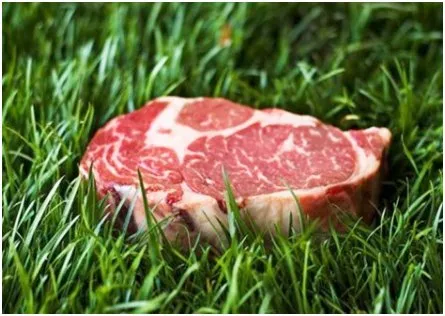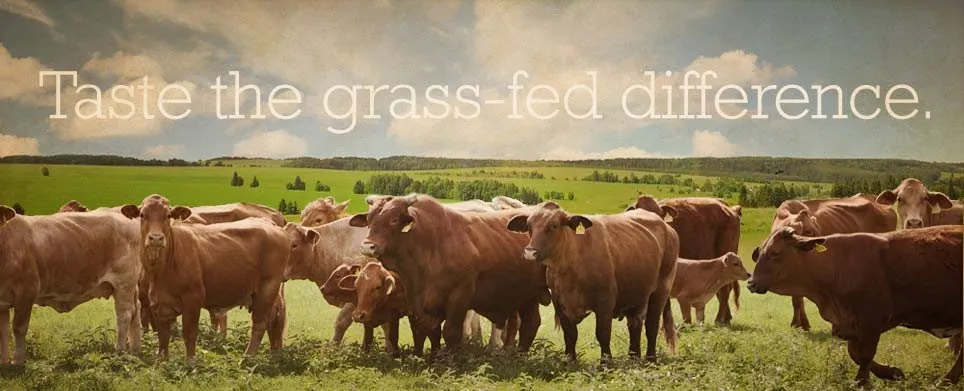
FAT is an essential nutrient of the human diet. Some fats can provide numerous health benefits, while others can promote disease. Beef is loaded with high quality fats when the cow is raised on grass for its entire life.
What exactly do you mean by Grass-Fed?
Ruminant animals, such as cows, bison, and lamb have been naturally selected by evolution to consume grass as their primary food source. While humans are not capable of extracting energy from grass as they lack certain digestive enzymes, these animals are healthiest when they get to graze on lush pastures filled with green grass. Grass fed is a term that refers to the feeding practices established by the farmer. In essence, the animal gets to live and eat grass for the majority of its life. See grass fed vs. grass finished.
Is the beef I am buying at the grocery store grass-fed?
Chances are, probably not. It is easy to spot grass-fed beef as there is always a “grass-fed” label on the package. USDA prime cuts are not grass-fed.
If the meat I am buying is not grass-fed, then what is the animal being fed?
Most of the time it is grains, such barley, wheat, and corn, but factory farms have been known to feed their animals chicken feathers, city garbage, and even animal by-products. I believe a lot of people are aware of the disturbing nature of factory farms, so I will not go into that topic in this post. If you want to read more about the truths of factory farms, click here
Does it really make a difference if the animal is fed grass vs. grain?

To many people’s surprise, the answer is yes! Allowing ruminant animals to live on pastures and consume grass throughout their entire lives produces not only happier and healthier animals, but more nutritious meat. Grass-fed beef has been proven to have considerably higher levels of essential fats, fat-soluble vitamins, antioxidants, and minerals. Check out these two studies done by researchers that show the differences of beef based off how the cows were fed:
Effects of conventional and grass-feeding systems on the nutrient composition of beef.
Both studies concluded that grass-fed beef was higher in essential omega 3 fatty acids, CLA, fat-soluble vitamins, carotenoids, antioxidants, and minerals.
Moving away from SAD
One of the most important biomarkers for your health is your omega-6 to omega-3 fatty acid ratio. It is commonly recommended by nutritionists and doctors to be about 2:1, and 1:1 if you are experiencing inflammation. This is nowhere close to most American’s dietary intake. The majority of Americans have a ratio of 20:1 to 30:1! Why is that? Corn, corn oil, canola oil, and soy are common foods Americans eat everyday that contain high levels of omega 6 fatty acids. Consuming grass-fed beef will move you from this highly inflammatory state to a much healthier way of life.
Pricing
Grass-fed beef is almost always more expensive. However, there are simple tricks you can do to pay less for this higher quality beef. Pretty much every farm will apply a discount to each pound of beef if you buy it in bulk. My recommendation is to find another friend or two that eats beef and purchase a bulk order, then split it up evenly. This way you are putting highly nutritious food into your body at a reasonable price, while not supporting factory farms. Some of favorite my places to order grass fed beef from are:

Stay tuned for more biohacks and health optimization advice!
Cheers,
Charles and Oliver
INSTAGRAM: BioWealth
SNAPCHAT: BioWealth 👻
#nutrition #grassfed #grassfedbeef #health #biohacking #fitness #energy #wellness #animalwelfare